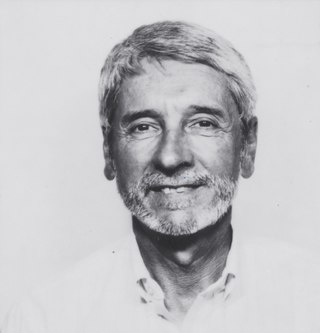
In mathematics, differential topology is the field dealing with the topological properties and smooth properties of smooth manifolds. In this sense differential topology is distinct from the closely related field of differential geometry, which concerns the geometric properties of smooth manifolds, including notions of size, distance, and rigid shape. By comparison differential topology is concerned with coarser properties, such as the number of holes in a manifold, its homotopy type, or the structure of its diffeomorphism group. Because many of these coarser properties may be captured algebraically, differential topology has strong links to algebraic topology.

Differential geometry is a mathematical discipline that studies the geometry of smooth shapes and smooth spaces, otherwise known as smooth manifolds. It uses the techniques of differential calculus, integral calculus, linear algebra and multilinear algebra. The field has its origins in the study of spherical geometry as far back as antiquity. It also relates to astronomy, the geodesy of the Earth, and later the study of hyperbolic geometry by Lobachevsky. The simplest examples of smooth spaces are the plane and space curves and surfaces in the three-dimensional Euclidean space, and the study of these shapes formed the basis for development of modern differential geometry during the 18th and 19th centuries.

In the mathematical field of differential geometry, the Gauss–Bonnet theorem is a fundamental formula which links the curvature of a surface to its underlying topology.

In algebraic and differential geometry, a Calabi–Yau manifold, also known as a Calabi–Yau space, is a particular type of manifold which has properties, such as Ricci flatness, yielding applications in theoretical physics. Particularly in superstring theory, the extra dimensions of spacetime are sometimes conjectured to take the form of a 6-dimensional Calabi–Yau manifold, which led to the idea of mirror symmetry. Their name was coined by Candelas et al. (1985), after Eugenio Calabi who first conjectured that such surfaces might exist, and Shing-Tung Yau who proved the Calabi conjecture.

Shing-Tung Yau is a Chinese-American mathematician. He is the director of the Yau Mathematical Sciences Center at Tsinghua University and Professor Emeritus at Harvard University. Until 2022, Yau was the William Caspar Graustein Professor of Mathematics at Harvard, at which point he moved to Tsinghua.
In mathematics, the Chern theorem states that the Euler–Poincaré characteristic of a closed even-dimensional Riemannian manifold is equal to the integral of a certain polynomial of its curvature form.
In the mathematical field of differential geometry, Ricci-flatness is a condition on the curvature of a Riemannian manifold. Ricci-flat manifolds are a special kind of Einstein manifold. In theoretical physics, Ricci-flat Lorentzian manifolds are of fundamental interest, as they are the solutions of Einstein's field equations in a vacuum with vanishing cosmological constant.

In differential geometry, the holonomy of a connection on a smooth manifold is a general geometrical consequence of the curvature of the connection measuring the extent to which parallel transport around closed loops fails to preserve the geometrical data being transported. For flat connections, the associated holonomy is a type of monodromy and is an inherently global notion. For curved connections, holonomy has nontrivial local and global features.

William Mark Goldman is a professor of mathematics at the University of Maryland, College Park. He received a B.A. in mathematics from Princeton University in 1977, and a Ph.D. in mathematics from the University of California, Berkeley in 1980.
In mathematics, a circle bundle is a fiber bundle where the fiber is the circle .
In mathematics, Hopf conjecture may refer to one of several conjectural statements from differential geometry and topology attributed to Heinz Hopf.
In differential geometry, an affine manifold is a differentiable manifold equipped with a flat, torsion-free connection.
In mathematics, specifically geometry and topology, the classification of manifolds is a basic question, about which much is known, and many open questions remain.
The Geometry Festival is an annual mathematics conference held in the United States.

In physics and mathematics, and especially differential geometry and gauge theory, the Yang–Mills equations are a system of partial differential equations for a connection on a vector bundle or principal bundle. They arise in physics as the Euler–Lagrange equations of the Yang–Mills action functional. They have also found significant use in mathematics.
Foundations of Differential Geometry is an influential 2-volume mathematics book on differential geometry written by Shoshichi Kobayashi and Katsumi Nomizu. The first volume was published in 1963 and the second in 1969, by Interscience Publishers. Both were published again in 1996 as Wiley Classics Library.
In differential geometry, Cohn-Vossen's inequality, named after Stefan Cohn-Vossen, relates the integral of Gaussian curvature of a non-compact surface to the Euler characteristic. It is akin to the Gauss–Bonnet theorem for a compact surface.
Paul Alexander SchweitzerSJ is an American mathematician specializing in differential topology, geometric topology, and algebraic topology.

Guido Mislin is a Swiss mathematician, academic and researcher. He is a Professor Emeritus of Mathematics at ETH Zurich. He is also associated with Ohio State University as a guest at Mathematics Department.












